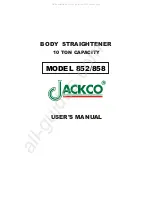
28
To prevent causing harm to the Injectable
Training Arm:
1. Use distilled water rather than alcohol, Betadine
®
,
or other skin preparing substances to simulate
preparing the puncture site.
2. Small diameter needles, 20-gauge to 25-gauge,
should be used to extend the life of the skin and
veins. The skin and veins will hold up to several
hundred sticks if smaller needles are used as
recommneded and all available sites arre used.
3. Synthetic blood will stain the soft skin of the
injectable training arm, clothes, most soft
surfaces, and some hard surfaces. Please use
caution.
4. Ink and newsprint will cause an indelible stain
to the injectable training arm. DO NOT place the
injectable training arm on printed surfaces or
plastic.
5. Follow Care and Maintenance instructions
carefully.
Set Up
Injectable Arm
Arm Skin Replacement
1. Remove the eight
screws retaining the
shoulder joint to the
arm.
2. Peel the skin down
and remove from arm
(See Figure 71).
3. Apply baby powder
to the interior of the
replacement skin and
pull onto the arm.
4. The key feature needs
to point to the L or R
depending on which
leg skin is being
replaced (See Figure
72).
Fig 71.
Fig 72.
Fig 73.
5. Install the eight screws, being careful not to over
tighten the screws.
6. Reattach arm to simulator torso.
Leg Skin Replacement
1. Remove the eight screws retaining the hip joint
to the leg. (See Figure 73).
2. Peel the skin down and remove from leg (See
Figure 74).
3. Apply baby powder
to the interior of the
replacement skin
and pull onto the
leg. (See Figure 75).
4. The key feature
needs to point to the
L or R depending
on which leg skin
is being replaced
(See Figure 76). This
feature plugs into
the R or L area of the
hip joint depending
on which leg skin is
being replaced.
5. Install the eight
screws, being careful
not to over tighten
Fig 74.
Fig 75.
the screws.
6. Reattach leg to simulator torso.
Fig 76.













































